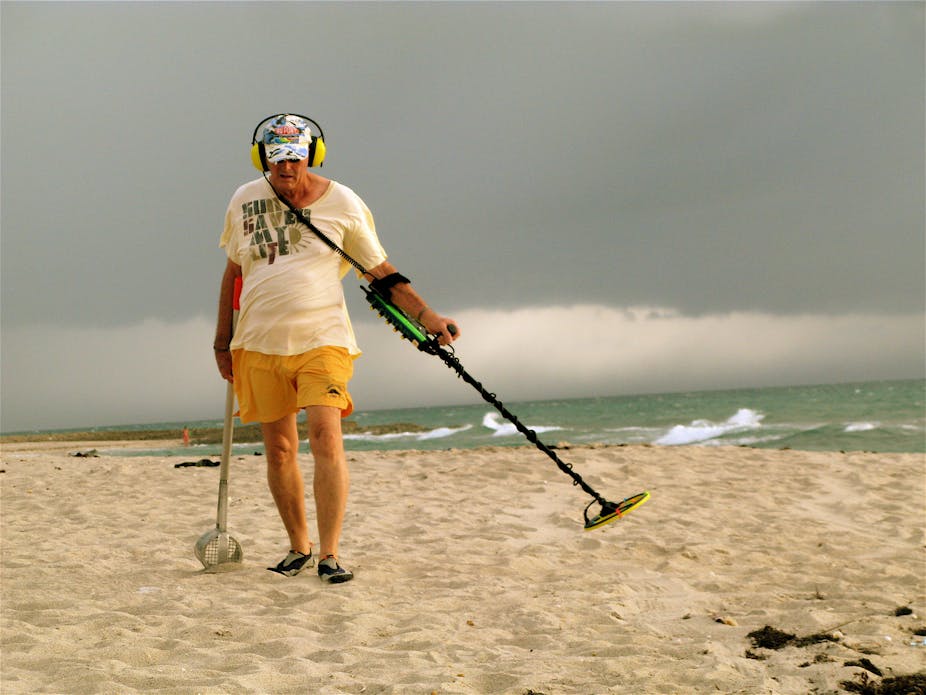Although some countries bar the export of all cultural heritage objects, this is not the case in the UK. It is legal to sell British antiquities overseas, but sellers must acquire an export license for objects over a certain value. In the case of exceptional national treasures, exports can be delayed to promote a UK buyer to come forward.
In this spirit, an export ban on a rare Iron Age mirror has been extended until September 2014 after an undisclosed buyer from the UK indicated an interest.
Iron Age mirrors are extremely unusual finds. They date from 300 BC to the time of the Roman conquest, and are almost exclusively British objects. This mirror, found around 2007 near Didcot, Oxfordshire, is one of only 20 complete, decorated examples, and the only one in private hands. So it is surprising that such a rare and unique object, recently discovered, has come so close to being exported.
The export license process is the last in a line of legal safeguards that help to protect finds made by the public, often by metal detectorists, so that objects of national importance can be preserved in museums. Legislation covers where it is legal for detecting to take place (not, for example, on a protected ancient monument) and what should happen to subsequent finds which fall into the category of “treasure”. If a find is declared treasure, local museums are offered a chance to acquire it before it is returned to the finder.

The legal criteria for treasure may sound arcane: the find must be more than 300 years old, and more than 10% precious metal (although groups of prehistoric base metal objects are also admissible, and there are special rules for coins). The need to legislate forces us to decide what we value, but the wording of the Treasure Act is less an archaeological wish list than an attempt to create a wide-ranging definition which covers the important finds that we can predict: pieces of jewellery, rich grave assemblages, and hoards of coins, chariot fittings, or axes.
In many cases, the treasure system ensures that important finds can be acquired by UK museums. In 2010, a metal detectorist discovered fragments of another Iron Age mirror in a field near Chesil beach in Dorset, accompanied by fragments of human bone. He reported the find to police, and a subsequent excavation by archaeologists from Bournemouth University uncovered the grave of a man buried in the first century BC.
Because the Chesil mirror was found in association with other prehistoric metal objects, the whole grave assemblage was declared treasure. The Treasure Valuation Committee, a panel of independent assessors, valued the find at £23,000. Despite occasional disagreements, Treasure valuations are designed to reflect a fair market rate, and the reward is usually split between the finder and the landowner. Dorset County Museum raised the money, and the Chesil finds will now be displayed in their Archaeology gallery where they can be seen by members of the public and studied by archaeologists and other researchers.
But due to the nature of treasure law, the process for the Didcot Mirror was not so smooth. The metal detectorist who uncovered the mirror insisted that it had been found in isolation, and as such it fell outside the scope of Treasure legislation. Finders are encouraged to report their finds, for example to the Portable Antiquities Scheme, but they are not obliged to reveal where, except in Treasure cases.
Details about the mirror’s discovery were never divulged, so no archaeological investigation could take place. The mirror was sold on the private market within the UK, but lack of information about the mirror’s findspot – what archaeologists call its context – made it difficult for a museum to acquire the find, and so it remained in private hands. Now the mirror has been sold to an overseas buyer, and the government is attempting to stave off export in the hope that a buyer at home will come forward.
Even without a known context, it is possible to argue the case for keeping an exceptional object like the Didcot mirror in the UK on the basis of its aesthetic importance and historical significance. A temporary export ban has been put in place, but this only buys time. Unless a British institution willing to match the £33,000 asking price can be found, the mirror will leave the UK and most likely remain in a private collection.
Ultimately, both treasure legislation and export licence criteria are imperfect solutions to the problems which sometimes arise with metal-detected prehistoric finds. They do not, and cannot, ask the questions that matter: what aspects of our heritage do we value most, and how should we safe-guard important objects? Does protection always need to mean being in a museum? And, crucially, who should decide?
To an archaeologist, the broken Chesil mirror is more valuable than the near-perfect example from Didcot, simply because the former comes from a known spot with a well-understood context. Yet these aspects of value are not protected by current legislation, and can never be reflected when putting a price on prehistoric finds.
So whether buyer at home is found or not, the most important aspect of this find, its archaeological context, has already been lost. If we really desire to protect our prehistoric past, we need to legislate (and educate) not just with the goal of protecting beautiful art objects, but also the sites where they are discovered.

